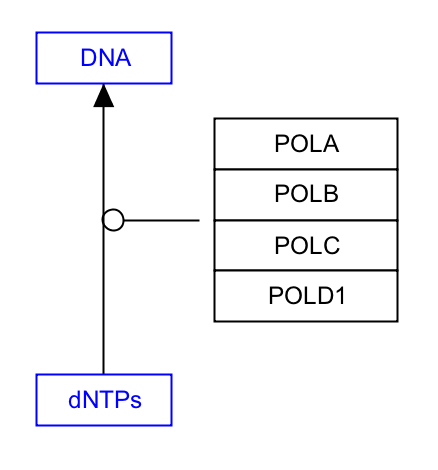Help:Guidelines
From WikiPathways
When creating or editing pathway information at WikiPathways, please keep the following guidelines in mind. These guidelines aim to promote consistency, accuracy and stability for the pathway content. By following these guidelines, you will help to maintain the highest possible quality of pathway information and to promote the success of community-based curation.
Contents |
General guidelines
Editing Pathways
Pathway annotation
Properly annotating pathways is essential to maintaining a high quality of curation and content at WikiPathways. Annotation includes assigning the pathway to one or more categories, defining each node with a database ID and adding a description for each pathway.
References to literature
Citing peer-reviewed publications is a quality standard in the scientific community and WikiPathways is no exception. We strongly encourage including relevant literature references both at the pathway level (Bibliography) and for individual interactions in pathways.
References to other sources
For all evidence from sources other than the scientific literature, please cite the source in the Bibliography section.
Making major edits
When making major edits (deletions in particular) to an existing pathway not created by you, first suggest the changes on the pathway discussion page, as a courtesy to the original author. Starting a discussion about the proposed changes is a productive way of community editing.
Content forking
If you plan to add tissue- or state-specific information to a pathway describing a general process, please create a new pathway and copy the relevant content from the original pathway, rather than making edits directly to the original pathway. When naming the new related pathway, it is appropriate to use the name of the original pathway, with a suffix or addition explaining the edits. This will ensure that pathway names are not duplicated and will help in organizing related pathway content.
Creating Pathways
Pathway naming
Pathways should have a descriptive name, like “Cholesterol Biosynthesis”. Do not name your pathway after your favorite pet or something else that is not descriptive of the process represented in the pathway. Do not include your name or username in the pathway name. If your pathway is specific to a particular state or tissue, this may be included in the name. If the pathway is based on content from an external source, the name of the source may be included in the name.
Adding author information
When creating a new pathway, add your name and contact email to the pathway. This will ensure that your information will be linked to the pathway even if it is downloaded and used in external applications.
References to other sources
For all evidence from sources other than the scientific literature, please cite the source in the Bibliography section.
Graphical style guidelines
WikiPathways does not enforce a particular graphical style for pathways. It is up to the individual author of a pathway to create a style that bests displays the relevant information. A few suggestions on specific aspects of graphical style are offered below. In addition, several other pathway resources have published guidelines on graphical style, which can serve as an inspiration for editing pathways at WikiPathways. For example, see the MIMs guidelines.
In the future, WikiPathways will perform automated checking for inconsistencies in pathways, such as undefined edges, undefined nodes, non-node edge termini and inconsistent node labels etc.
Representing complexes
Representing molecular complexes can be done in a variety of styles. We recommend using a stacked representation whenever possible, which can easily be accomplished with the “Stack genes” feature in the editor Toolbar. The example below displays a stacked representation of the complex of subunits A, B, G and D1 of the human DNA polymerase.
Pathway boundaries
WikiPathways does not define rules for defining pathway boundaries. The boundaries of each pathway at WikiPathways are entirely chosen by the author. Pathways may overlap or correspond to the same topic, but should each serve a unique goal in what it represents. If there are uncertainties about the boundaries of the particular pathway you are editing please browse related pathways at WikiPathways to get an idea of appropriate pathway boundaries. Detailed guidelines on defining pathway boundaries developed by other resources can also be consulted, specifically the BioCyc guidelines relating to metabolic pathways.
Pathway redundancy
Enforceable Policies
- See policies page for list of rules regarding conduct, content and contributions at WikiPathways.


